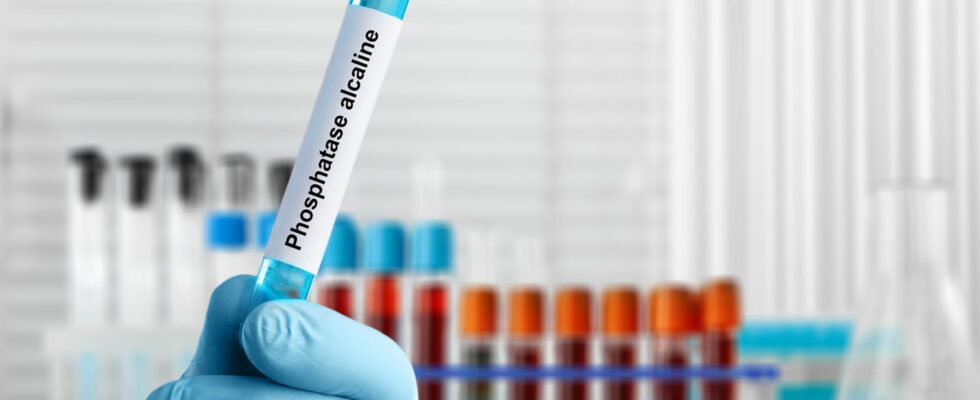Too high ALP levels can indicate a problem with the liver or bile.
Alkaline phosphatases (abbreviated PAL in French or ALP in English) are a variety of enzymes naturally present in several types of cells. They are found in several organs, including the kidneys, bones, pancreas, spleen, intestines, placenta, lungs and even the liver. They participate both in bone mineralization and in the proper functioning of the liver.
Phosphatases are measured using a blood test for which it is not necessarily necessary to fast (it is still preferable) via a venipuncture carried out in the fold of the elbow in case of suspicion of bone diseases , renal, hepatic… “The PAL rate can vary in very varied situations. Consequently, their analysis will depend enormously on the context and other anomalies observed“, explains Dr Sonesadeth Insisienmay, general practitioner. Measuring ALP alone is therefore not enough to make a diagnosis of liver disease or any liver problem, but it can guide the diagnosis.
“A low level of ALP is relatively rare and can be observed in cases of hypophosphatasia of genetic origin, severe liver failure, hypoparathyroidism, or in cases of major deficiencies or malnutrition.“, continues the general practitioner. On the contrary, a high level of ALP can be a reflection of cholestasis, a liver disease characterized by a reduction in bile secretion which can cause jaundice (jaundice). This can be lithiasis, a tumor biliary tract, cirrhosis or even steatosis.
“Elevated ALP activity is often accompanied by elevated gamma-GT levels.specifies for his part Professor Patrick Marcellin, hepatologist at Beaujon hospital and president of the APHC (Association for the improvement of the care of patients with chronic liver diseases). The dosage of gamma-GT is done as part of a liver assessment: it is the reference test to assess the state of health of the liver. This examination is simple, routine, painless and non-invasive. As liver diseases are silent and often without symptoms, it is important to have a liver check-up regularly.
For an adult, the reference values are included (according to laboratory standards) between 35 IU/l and 105 IU/l PAL for a woman and between 40 IU/l and 130 IU/l PAL for a man. A level below or above these standards should therefore be monitored by a doctor. Concerning reference standards in children, “we do not have precise rates for alkaline phosphatase levelsreplied the doctors from the Hematology-Gastroenterology department of the Pediatric Hospitals of Nice CHU-LENVAL. Indeed, the rates vary depending on the age of the child.“. Please note that the ALP level is physiologically high in children and adolescents due to bone growth (for example 135-518 IU/l for a 1 year old child, 140-460 IU/l for a child of 13 years old according to the rates of the University Hospital of Liège).
